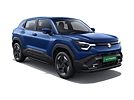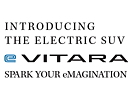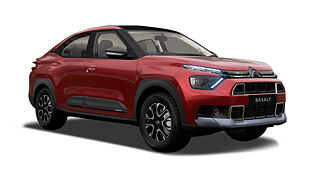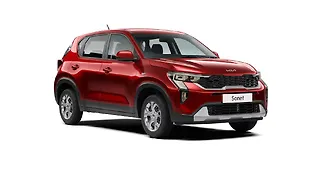Ford EcoSport [2017-2019] Trend + 1.5L TDCi
- EcoSport [2017-2019]
- 360° View
- Specs & Features
- Variants
- Colours
- User Reviews
Variant
Ford EcoSport [2017-2019] Trend + 1.5L TDCi Review
The general consensus around the old Ford EcoSport has long been that it’s a tough looking but sparsely equipped compact SUV that’s expensive to maintain. Nonetheless, that simply isn’t the case anymore. To begin with, in the last few years Ford India has expanded its service and spares network and as a result, the EcoSport indeed is low on maintenance and on par with the local adversaries.
Introduction
Design and Style
Interior
Safety and Equipment
Engine, Performance and Braking
Ride and Handling
Price and Fuel Economy
Specification
Test Data
Specifications & Features
- Specifications
- Features
- Specifications
- Features
Specifications
Engine & Transmission
Engine1498 cc, 4 Cylinders Inline, 4 Valves/Cylinder, DOHCEngine Type1.5L DV5 (Diesel)Fuel TypeDieselMax Power (bhp@rpm)99 bhp @ 3750 rpmMax Torque (Nm@rpm)205 Nm @ 1750 rpmMileage (ARAI)23 kmplDrivetrainFWDTransmissionManual - 5 GearsTurbocharger / SuperchargerTurbochargedValve/Cylinder (Configuration)4, DOHCDimensions & Weight
Length3998 mmWidth1765 mmHeight1647 mmWheelbase2519 mmGround Clearance200 mmKerb Weight1280 kgCapacity
Suspensions, Brakes, Steering & Tyres
Features
Exterior
Braking & Traction
Safety
Comfort & Convenience
Lighting
Locks & Security
Doors, Windows, Mirrors & Wipers
Entertainment, Information & Communication
Storage
Seats & Upholstery
Instrumentation
Manufacturer Warranty
Other EcoSport [2017-2019] Variants
| Variants | Price | Specifications | |
|---|---|---|---|
Rs. 9.57 Lakh | 5 Person, FWD, 205 Nm, 200 mm, 1280 kg, 352 litres, 5 Gears, 1.5L DV5 (Diesel), No, 52 litres, No, No, Front & Rear, 3998 mm, 1765 mm, 1647 mm, 2519 mm, 205 Nm @ 1750 rpm, 99 bhp @ 3750 rpm, Remote, Yes (Automatic Climate Control), Front & Rear, 1, Reverse Camera, 0, No, No, No, Yes, 0, 5 Doors, 23 kmpl, Diesel, Manual, 99 bhp | Get Offers from Dealers |
Similar Cars
Explore Used Ford Ecosport
Colors
Reviews
- (14 Ratings) 14 Reviews
4.0/5
- A signature experience with signature honk..It really a powerfull compact suv ..to drive honk is such a amazing experience.. It provides great comfort with wonderfull package of mordern features. It has a good space at both rows of seats in cabin. It really worth the ammount it takes to purchase this..Rating parameters(out of 5)5
Exterior
4Comfort
5Performance
3Fuel Economy
5Value For Money
About the ReviewerPurchase NewDriven forIts my mate since agesWas this review helpful?00 - Price worth to buyBuying experience was quiet good. Riding is full enjoyable. Performance wise it gives good feul economy on highways. Servicing and maintaince to low as compared to others. Cons:Rear seat is not spacious.Rating parameters(out of 5)5
Exterior
4Comfort
5Performance
4Fuel Economy
5Value For Money
About the ReviewerPurchase NewDriven forFew thousand kilometersWas this review helpful?00 - Unique Car For Unique People....Buying experience: Good experience while buying this compact Sub SUV. Riding experience: Great Riding Quality, great stability at Road Details about looks, performance etc: It's look unique and different than others, performancewise no issue Servicing and maintenance: Low maintenance cost and great thing you know now how much going to charge for service . There is maintenance cost chart available and no delaer can charge above to this cost. Pros and Cons: Look unique and great Riding Quality. Great stability and control on road even at high speed.Rating parameters(out of 5)4
Exterior
4Comfort
5Performance
4Fuel Economy
4Value For Money
About the ReviewerPurchase NewDriven forFew thousand kilometersWas this review helpful?00
- Home
- Ford Cars
- EcoSport [2017-2019]
- Trend + 1.5L TDCi




![Ford EcoSport [2017-2019] Trend + 1.5L TDCi Ford EcoSport [2017-2019] Trend + 1.5L TDCi](https://imgd.aeplcdn.com/664x374/cw/ec/31676/Ford-EcoSport-New-Right-Front-Three-Quarter-111783.jpg?wm=0&q=80)
![Ford EcoSport [2017-2019] Right Front Three Quarter Ford EcoSport [2017-2019] Right Front Three Quarter](https://imgd.aeplcdn.com/664x374/cw/ec/31676/Ford-EcoSport-Right-Front-Three-Quarter-135310.jpg?wm=0&q=80)
![Ford EcoSport [2017-2019] Rear View Ford EcoSport [2017-2019] Rear View](https://imgd.aeplcdn.com/664x374/cw/ec/31676/Ford-EcoSport-Rear-view-135307.jpg?wm=0&q=80)

![Ford EcoSport [2017-2019] Left Rear Three Quarter Ford EcoSport [2017-2019] Left Rear Three Quarter](https://imgd.aeplcdn.com/664x374/cw/ec/31676/Ford-EcoSport-left-rear-three-quarter-135306.jpg?wm=0&q=80)
![Ford EcoSport [2017-2019] Left Side View Ford EcoSport [2017-2019] Left Side View](https://imgd.aeplcdn.com/664x374/cw/ec/31676/Ford-EcoSport-Left-Side-View-135305.jpg?wm=0&q=80)
![Ford EcoSport [2017-2019] Left Front Three Quarter Ford EcoSport [2017-2019] Left Front Three Quarter](https://imgd.aeplcdn.com/664x374/cw/ec/31676/Ford-EcoSport-Left-Front-Three-Quarter-135304.jpg?wm=0&q=80)










![Second hand Ford EcoSport Titanium + 1.5L Ti-VCT AT [2019-2020] Second hand Ford EcoSport Titanium + 1.5L Ti-VCT AT [2019-2020]](https://imgd.aeplcdn.com/310x174/vimages/202501/3777210_46575_1_1735998089724.jpg?q=80)







